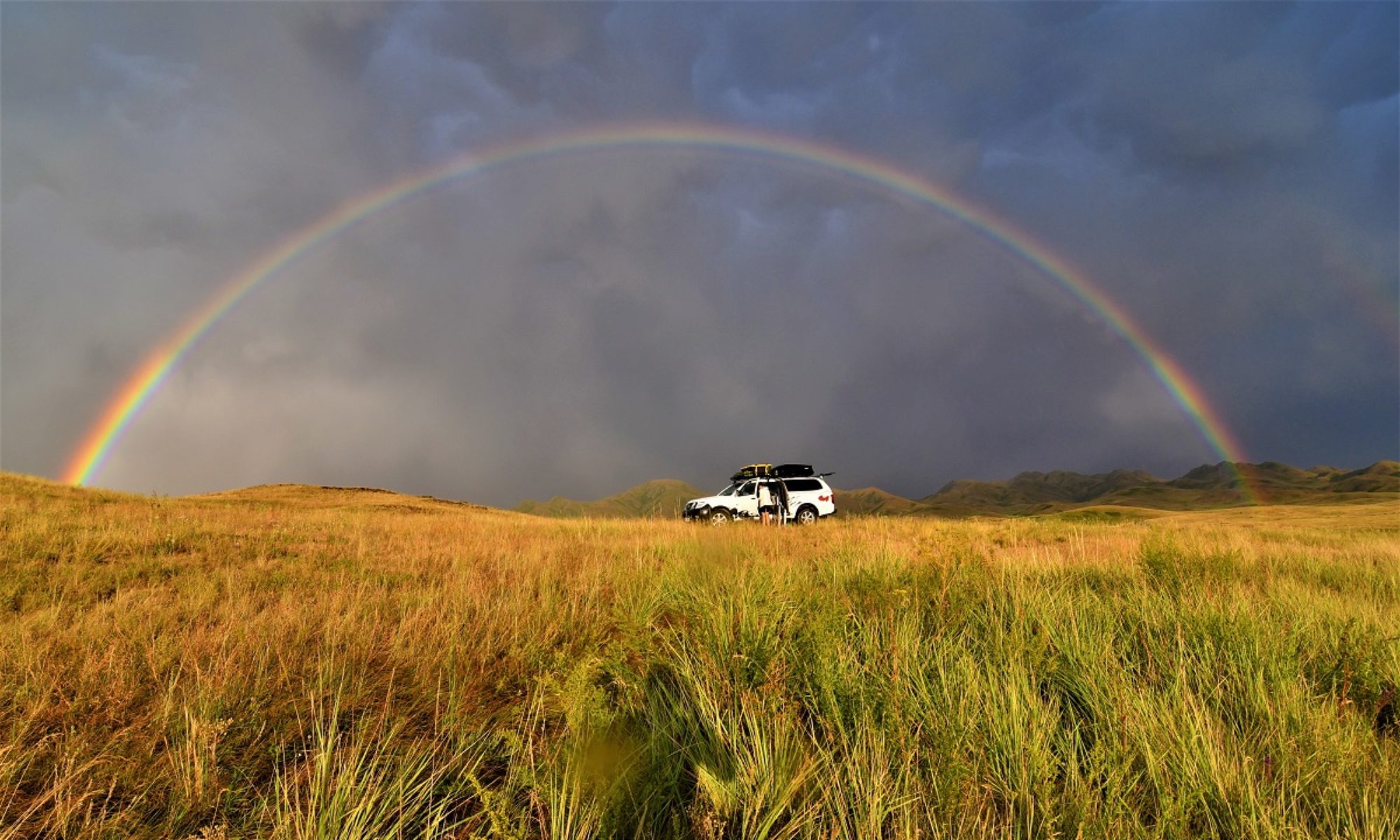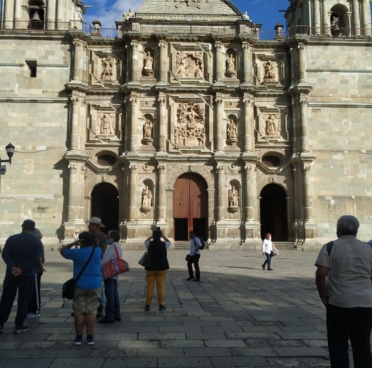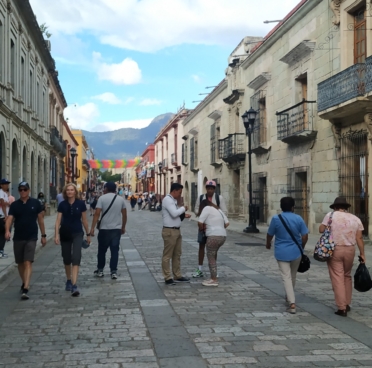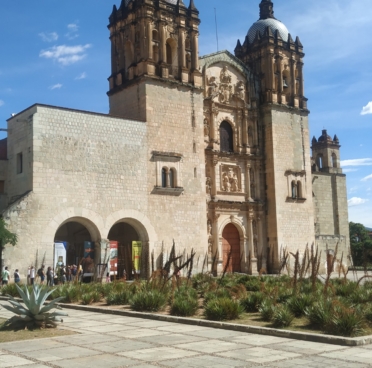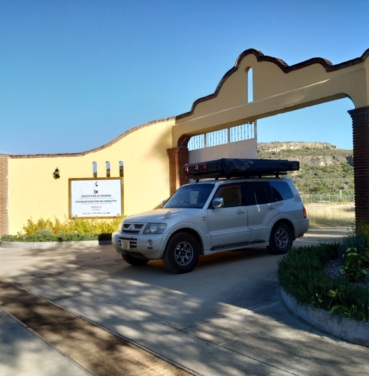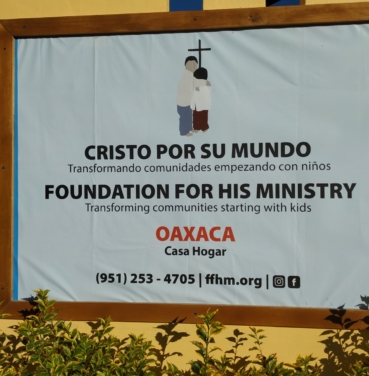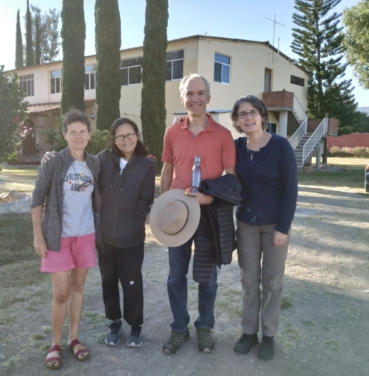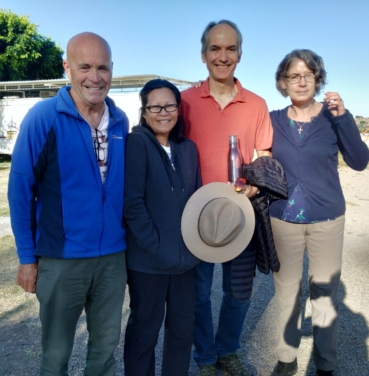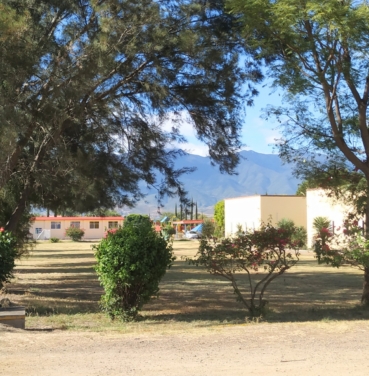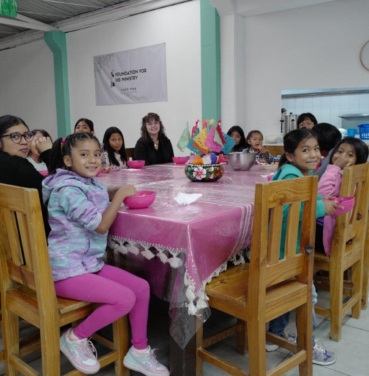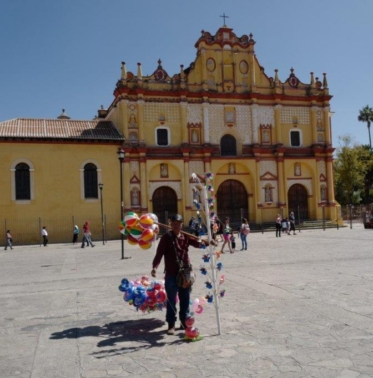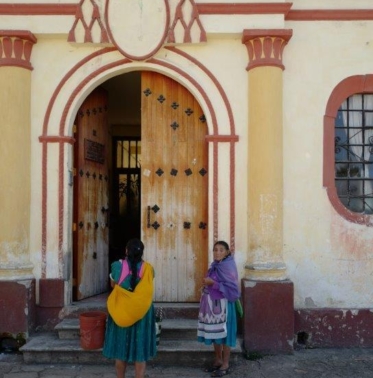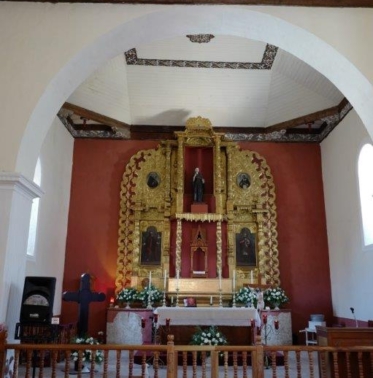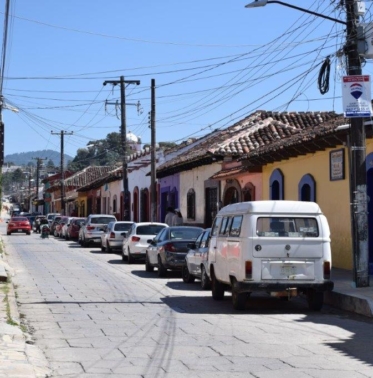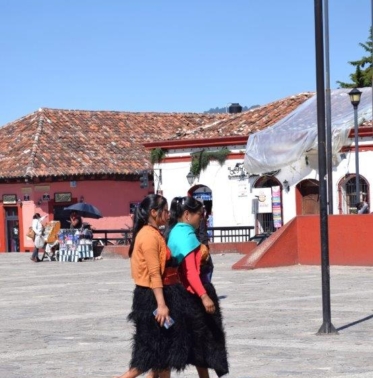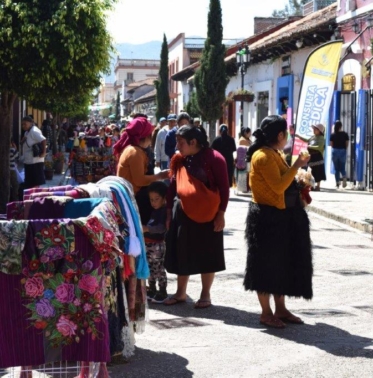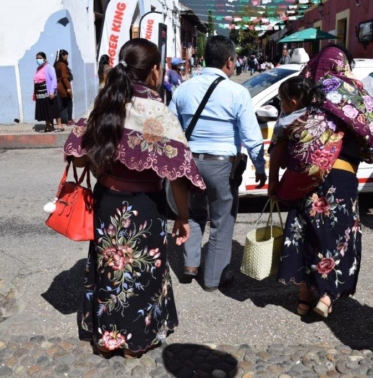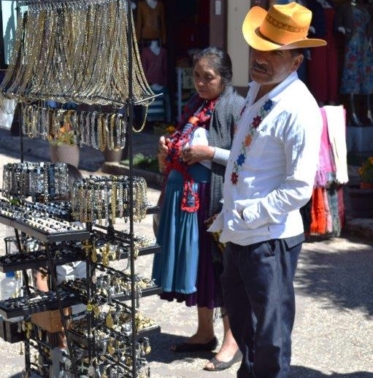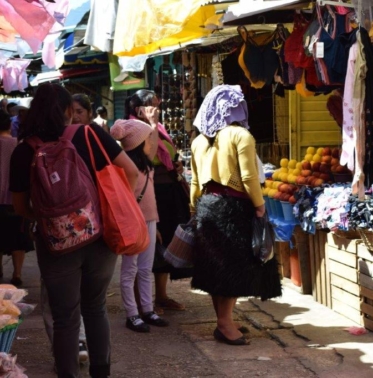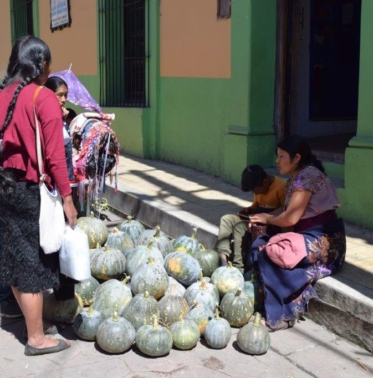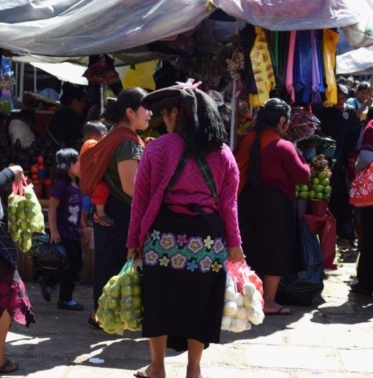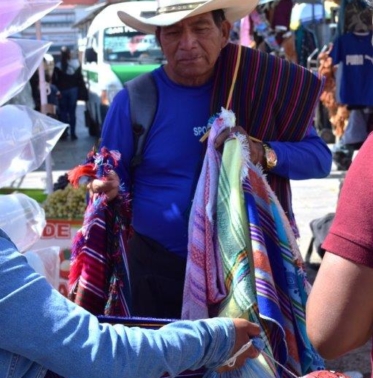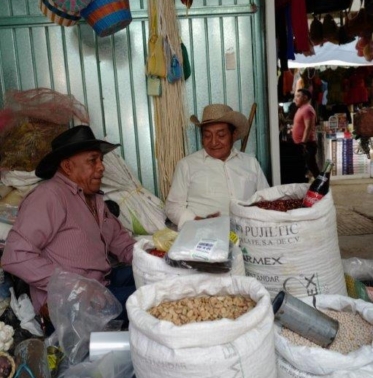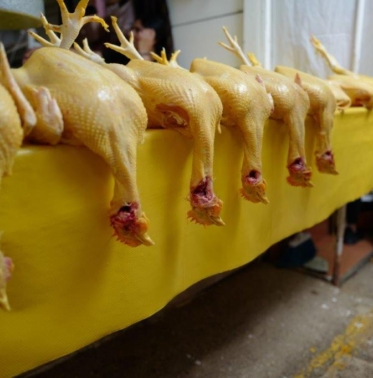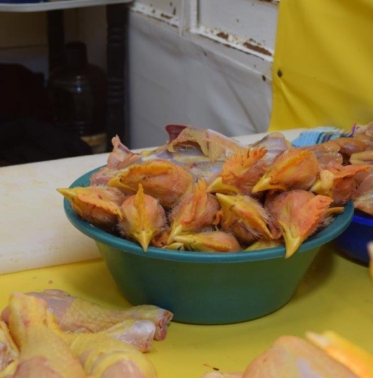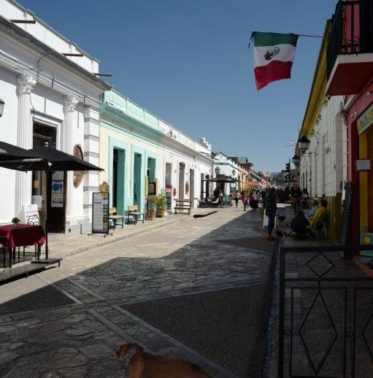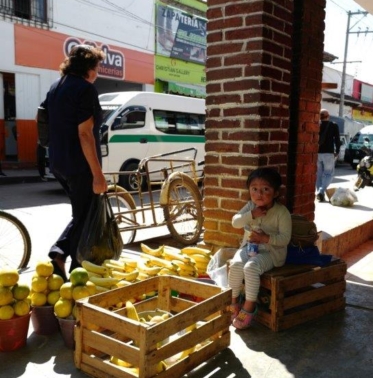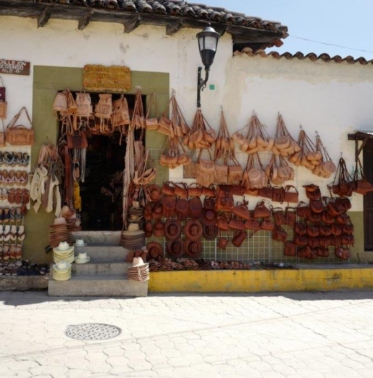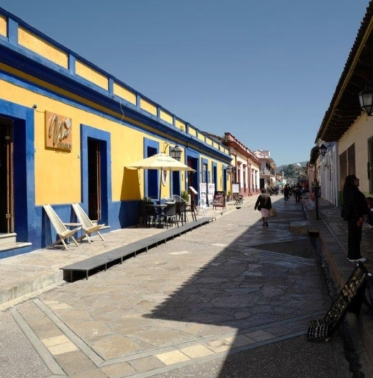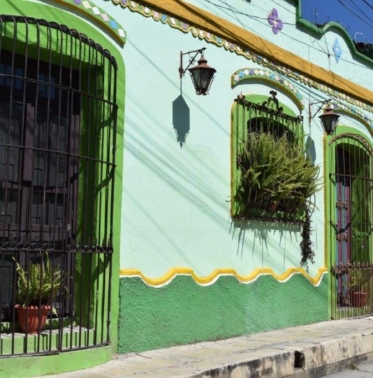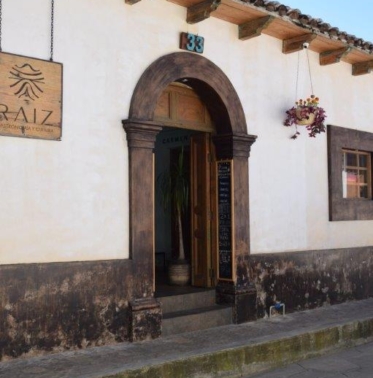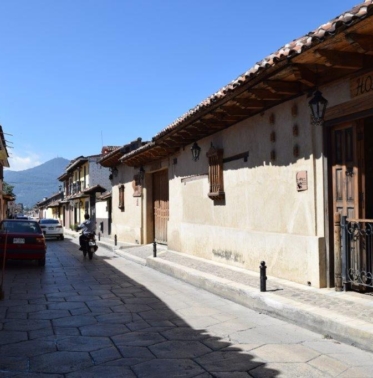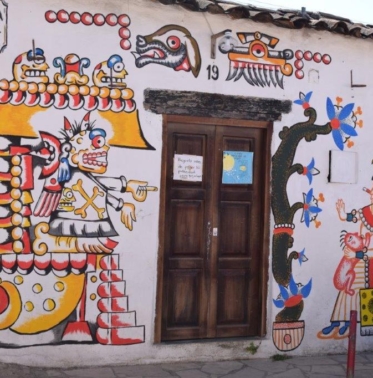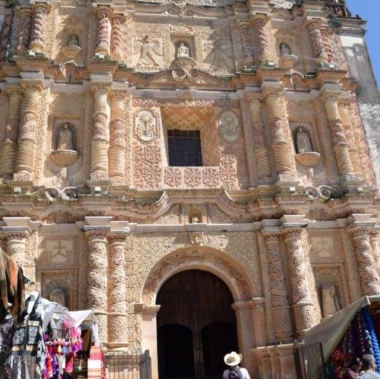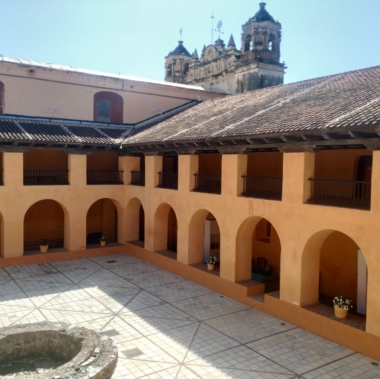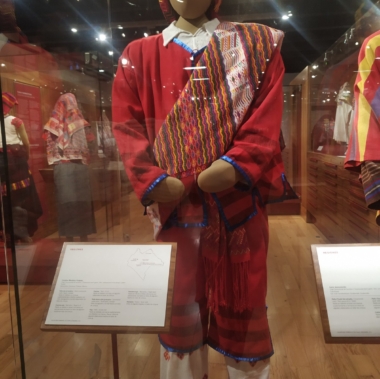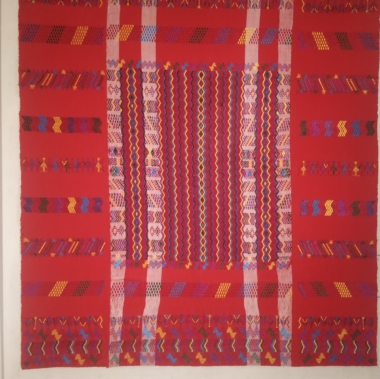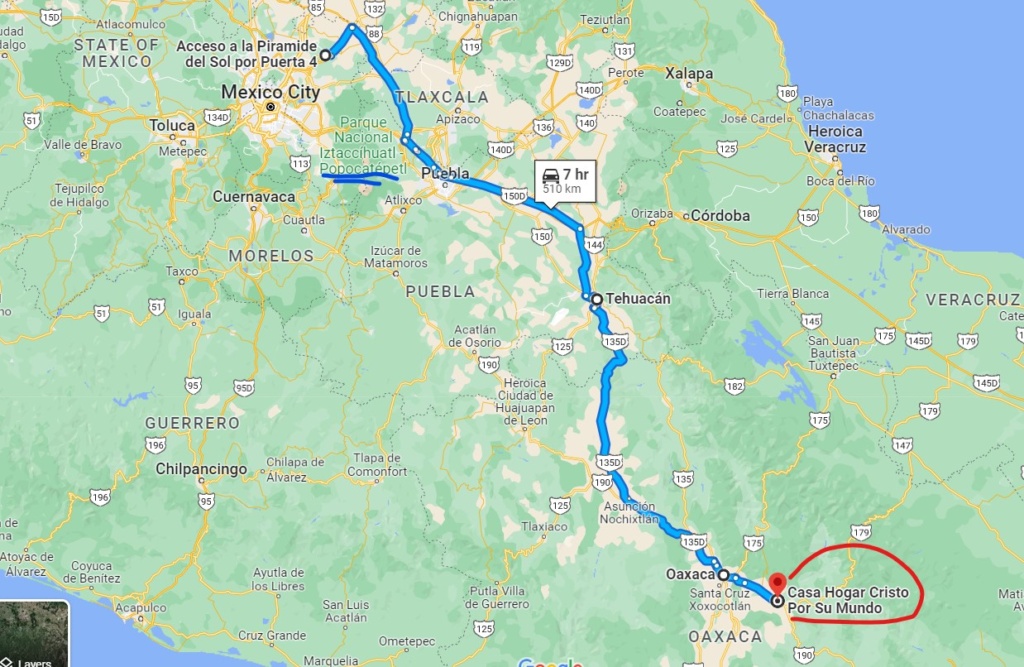
Our next destination was Oaxaca. We wanted to avoid Mexico City so took the direction of Puebla. We were not so far from the two volcanoes, Popocatepetl and its neighbour Iztaccihuatl, which are south of the city and we were lucky enough to have a brief glimpse before the clouds covered them.
Popocatepetl is 5,452m high and is active. We could see white fumes escaping from the crater. Its name in the indigenous Nahuatl language means: “Smoking Mountain” Iztaccihuatl, 5,220m is dormant with a small snow cap. You can climb to the top. They are the 2nd and 3rd highest mountains in Mexico.
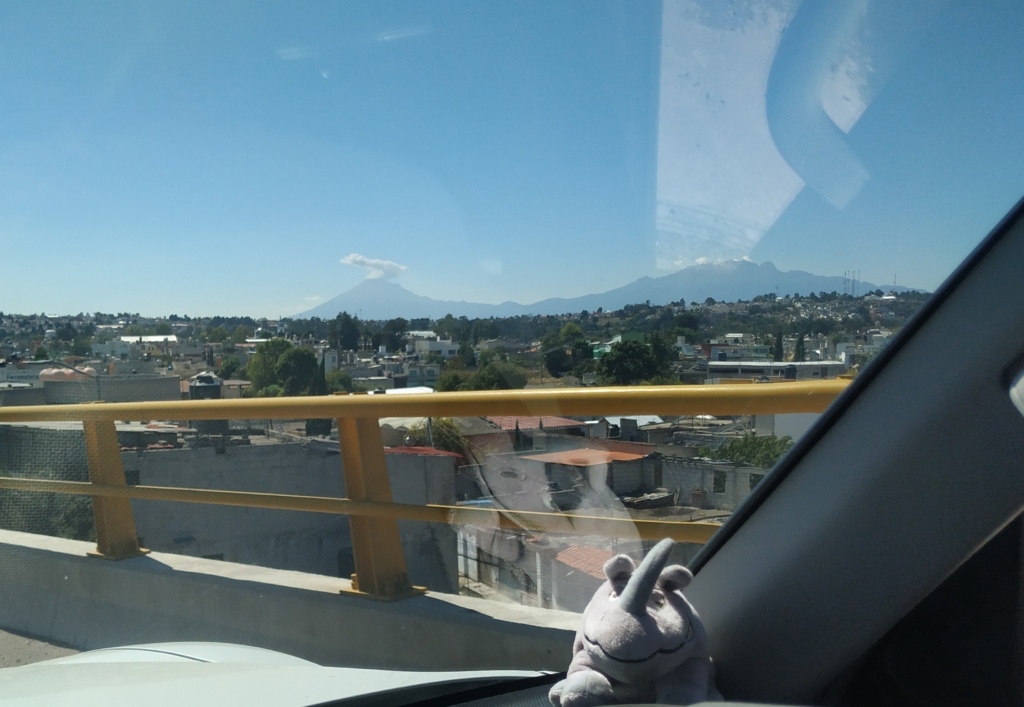
Oaxaca is a Unesco World Heritage site and the “Centro Historico” has cobble streets lined with colourful houses and majestic buildings in colonial style, museums and attractive plazas. It is also reknown for its cuisine.
We wanted to visit the Museo de las Culturas de Oaxaca, housed in beautiful Monastery buildings attached to the Church of Santo Domingo de Guzman where the treasure discovered in one of the Tomb at the nearby Monte Alban Archeological site is displayed.. We got in line and we were stopped just before our turn to go through as the Museum closes at 3pm and as it was 2 pm, they do not allow any more visitors after that time! Disappointed as we are only passing through town so won’t be able to come back the next day as suggested by the guard at the door…
We walked through the old town and simply enjoyed the atmosphere. We decided to go and try the famous “Mole”, a traditional sauce and marinade originally used in Mexican cuisine. Both states of Puebla and Oaxaca claim the origin of the sauce with accompanying story as evidence, but other regions of Mexico also have their own variations. Chili peppers are the common ingredient with fruits, nuts, and spices like black pepper, cinnamon or cumin. The classic mole version is the variety called mole poblano, which is a dark red or brown sauce served over meat. In Oaxaca you can find several varieties such as Mole Amarillo, Mole Verde, Mole Colorado … depending on additional ingredients used and the resulting colour of the sauce.
[click on picture to open gallery]
Casa Hogar por su Mundo
We left town later than planned and were looking for a place to camp when we came across a Mission for orphaned children. The gates were open so we went in and saw someone working in the grounds. We explained we wanted to camp. That person contacted the Pastor who came round and kindly agreed and welcomed us. He even offered a room in the building which is dedicated for visitors. He showed us where we could have a shower and told us to join them for breakfast at 7 a.m the next morning.
By then, volunteers staying in the Visitor accommodation were coming back from dinner and invited us for coffee. We spent a pleasant and fun evening playing “UNO” !
Next morning, at the invitation of Johnny, the Pastor, we decided to stay for the day and contribute by helping the other volunteers to do gardening in the extensive grounds.
We had our meals with the children and their foster families in the refectory. There are around 60 children ranging from 3 to 18 years old. The younger children attend school at the Mission but older children attend school in Oaxaca, around 40mn drive away. The aim of the Mission is to provide a loving and caring environment for children who’ve had a difficult start in life.
[click on picture to open gallery]
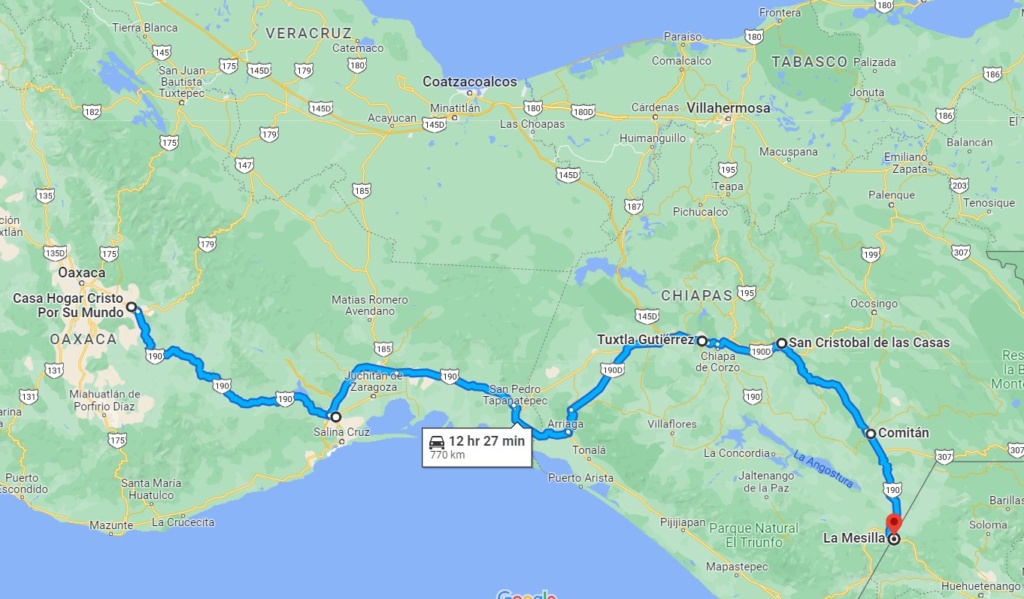
Left the following morning after breakfast. What appeared to be low clouds stuck in the valley turned out to be the smoke from distilleries producing Mezcal ( see previous entry under Tequila country). We passed numerous places where you could actually see the fires and the piles of “piñas” waiting to be processed, as well as merchants by the side of the road where you could do some tasting. Fields of agave plants clung to the side of hills and sometimes even the side of the road was used!
Twenty kilometers from Tehuantepec we got caught in a massive traffic jam created by a road block set up by local disgruntled activists, further up the road. Trucks and buses had no option but to stop and wait. we initially followed another car passing the line of trucks but after 200m or so we had to turn back. A man in a tuk-tuk was re-directing the traffic to a small dirt road way back were we had started and when we got there other men were asking for money to let us through! They showed us a M$ 500 note( around $25). We refused to pay and said we did not have that kind of money. In the end they accepted M$50! The dirt road in the middle of fields was quite bad and very, very dusty. Some cars were ahead of us and we could hardly see where we were going because of the dust clouds they generated. After a short while we hit another place where a group of men were trying to push big sticks in the dirt in the middle of the road to stop cars. They asked for money… we argued that we had already paid but they insisted that this was private property and we needed to pay. We refused and as the ground was so hard their attempt to block us failed. We inched our way forward and we got through !
We eventually rejoined the paved road way passed Tehuantepec. We carried on and passed a few police road blocks but were not stopped. We arrived at our destination for the night: Tuxtla-Gutierrez, capital of the State of Chiapas. The city struck us as being more upmarket than any other places we went to in Mexico, with modern buildings, shopping malls, fancy bars and restaurants. We went straight to Hotel Al Hacienda which allows you to park in their grounds and use toilets and showers +use of wifi for M$200 ($10). We were right in the city but it was fairly quiet and surrounded by trees. It was very hot and humid though.
SAN CRISTOBAL de las CASAS
The next day we drove to Cristobal de las Casas, known for its well-preserved colonial architecture, such as the centuries-old, yellow San Cristóbal Cathedral on the Parque Central. We wandered through the town market and visited the Los Altos Museum, in the baroque former Santo Domingo de Guzmán convent, which shows regional history and textile exhibits.
[click on picture to open gallery]
[Click on image to open the gallery]
We then drove on to Comitan to get close to the border with Guatemala and go through the following day. We stopped at a big shopping mall and bought groceries thinking we would stay and park near a Walmart supermarket for the night but in the end we felt more secure across the road at a Texaco petrol station. We asked if we could park for the night and the manager there agreed. We had the use of toilets and as the station was open 24h there was a security guard too! The only downside was the noise from the road. Trucks here are really loud and some have a particular noise when they change gears which is deafening.
